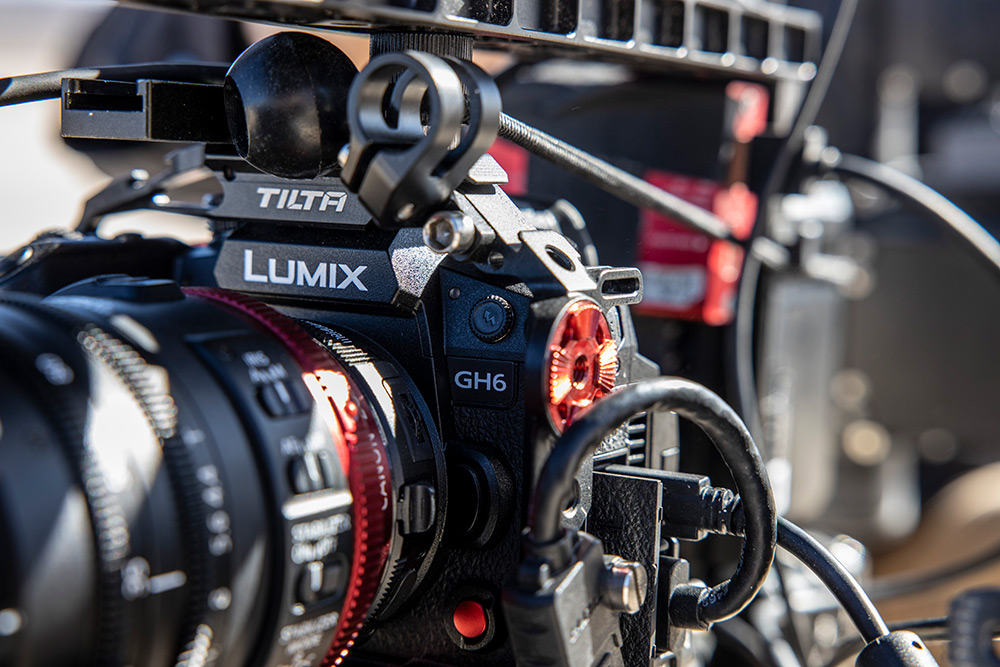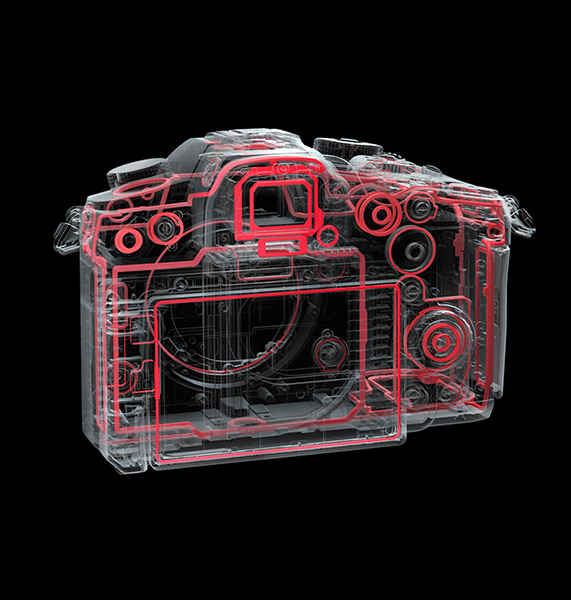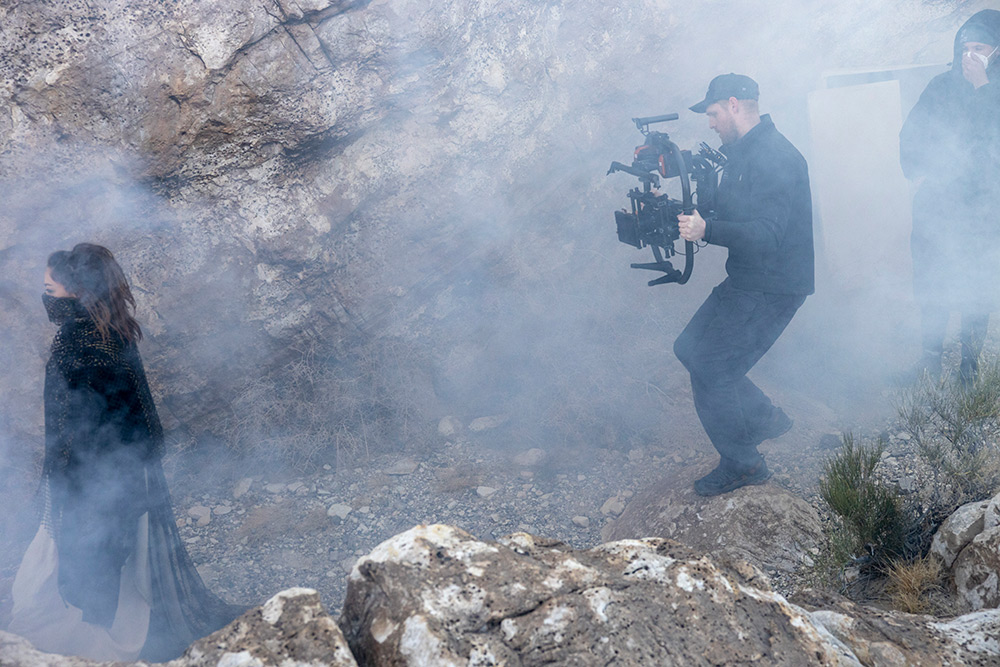- Call us: 01444 237070
- Contact Us
- Stores
- Sign In / Register
-
- Back
- Used Cameras
- Used Accessories
- Used Lenses
- Used Video
- Used Film Equipment
- Used Stock Alert
- Used Blank Test
- Sell or Part Exchange
- Used Clearance
- Recently Added Used Equipment
- Park Picks
- All Used Black Friday Deals
- Faulty
- Trade-In
- Blog
- New in
- Call us
- Contact us
- Stores
- Sign in
- Categories
- Tips & Inspiration
- Reviews
- News
- Events
- Features
- Buying Guides
- Competitions
Flagship Panasonic Lumix GH6 Camera Explored
2022 is proving to be a fantastic year to be shooting with the micro four thirds system, so we thought what better time to explore the newly developed Flagship Panasonic Lumix GH6 Camera in Detail. We have a specs comparison as well as in-depth details including a video review.

Panasonic Lumix GH Series Cameras Background
Panasonic has been evolving the GH series since back in 2009, when the very first hybrid model DMC-GH1 was released. Technology has come on leaps and bounds since those early days, with mirrorless cameras going from zero to hero in a matter of just a few years.
Whilst the various iterations of GH cameras were adopted in varying degrees, it was the GH5 which became the video-centric hybrid camera of choice, for many users. It had the compact size, there were a large selection of micro four thirds lenses available and video capabilities were on-par for content creation at the time. That’s not to say there weren’t improvements which could be made, but we are talking about 2017 after all and once again a lot of technology has changed in just a few years. Whilst we have had the GH5 Mark II since 2021, all eyes were firmly fixed on the early announcement of the GH6.

What’s New in The Lumix GH6
The GH6 feels like a combination of evolution and revolution. It is without question a video camera first and foremost, but there’s also no question that it is now a highly accomplished stills camera too, putting it somewhere in line with video-first or video-centric hybrids. There is plenty which is new and updated with some absolute firsts for the MFT system.
Whether you’re a seasoned GH shooter or new to Panasonic Lumix cameras there is a lot to digest, which is why we thought a comparison with the previous camera would make a useful starting point for specs and features.

Some of the highlight technology includes:
- First ever 5.7K 30p internal video recording available in ProRes 422 HQ and ProRes 422 for a GH camera
- Brand new high resolution 25.2 megapixel LIVE MOS sensor developed by Panasonic
- Higher bit rates with 10-bit available throughout formats
- 4:2:2 10-bit Cinema 4K 60p internal recording as well as simultaneous output in 4:2:2 10-bit Cinema 4K 60p over HDMI
- HFR 4K 120p in 4:2:0 10-bit and FHD 240p HFR FHD 240p HFR
- Unlimited video recording time across all formats
- 100-megapixel high-resolution image handheld
- Coming soon via firmware Cinema 4K 120p HDMI RAW Video Data Output to ATOMOS Ninja V+
- 1+ stop IS with 7.5 stops of Body I.S. and Dual I.S.2 with compatible lenses
- 13+ Dynamic range with new Dynamic Range Boost mode
- V709 and Rec.709 standard is available in the camera by default
- Video assist functions such as Waveform Monitor, Safety Zone Marker and Tally lamps
- Timelapse 4K/60p
- MF assist during video recording up to 6x
- New processor includes New Intelligent Detail Processing, New 2D Noise Reduction, and High Precision 3D Noise Reduction for video
- ISO 100 [Photo: ISO 50 (Extended) - 25600 / Video: ISO 50 (Extended) -12800]
- Linear and non-linear manual focusing settings
- One CFexpress card (Type B) added to the second SD card slot
- Latest USB 3.2 Gen 2 Type-C
- Time Code IN/OUT synchronisation through the flash synchro terminal and bundled BNC converter cable with BNC cable

Panasonic Lumix GH6 Specs Vs GH5 Mark II
We’ve taken highlight specifications for the two latest models from the Lumix MFT line-up so you can compare which features are best for your type of creation. Prepare to be impressed by this flagship camera.
|
|
||
|
Sensor |
New Live MOS sensor (MFT) without Low-pass Filter |
Live MOS sensor (MFT) |
|
Processing Engine |
New Venus Engine with approx. 2x processing speed |
Previous Venus Engine |
|
Megapixels |
25.2 megapixel |
20.3 megapixel |
|
Memory card |
CFexpress B And SD Memory Card |
SD Memory Card x2 |
|
Max Video Formats |
5.8K 5760x4320 (4:3) / 29.97p 5.7K 5728x3024 (17:9) / 59.94p 4K 3840x2160 / 119.88p FHD 1920x1080 / 239.76p |
C4K 4096x2160 / 59.94p 4K 3840x2160 / 59.94p 4K 3840x2160 / 59.94p FHD 1920x1080 / 59.94p |
|
Viewfinder |
OLED Live View Finder 3.68-million dot |
OLED Live View Finder 3.68-million dot |
|
LCD |
TFT LCD monitor with static touch control, Free angle 3.0-inch, 1.84 million dots |
TFT LCD monitor with static touch control, Free angle 3.0-inch, 1.84 million dots |
|
AF mode *Automatic Detection |
Human / Face / Eye/ Animal + Human |
Face, Eye, Body, Animal |
|
Highest Burst Rates |
Mechanical: 14 frames/sec (AFS/MF), 8 frames/sec (AFC) (with Live View)
Electronic: 75 frames/sec (AFS/MF) At full resolution
|
Mechanical: 12 frames/sec, M: 7 frames/sec (with Live View)
6K PHOTO: 30 frames/sec 4K PHOTO: 60 frames/sec |
|
ISO Sensitivity |
Auto / 50 (Extended ISO) / 100-25600
[V-Log] Auto / 125 (Extended ISO) / 250-12800 |
Auto / 100 (Extended) / 200-25600
[Creative Video Mode] Auto / 125 (Extended ISO) / 250-12800 |
|
Image Stabilisation |
7.5-stop / Dual I.S. 2 compatible |
6.5-stop / Dual I.S. 2 compatible |
|
Unlimited recording time |
Yes |
Yes |
|
Audio Format |
4 Channel available via DMW-XLR1 |
2 Channel available via DMW-XLR1 |
|
High Res Mode |
100 megapixel high-resolution image (handheld) |
N/A |
|
Dimensions |
Approx. 138.4 x 100.3 x 99.6 mm |
Approx. 138.5 x 98.1 x 87.4 mm |
|
Weight |
Approx. 739g Body only |
Approx. 647g Body only |

There’s a lot to like here, with everything updated from the sensor and processor to video formats, high bit rates, stabilisation and AF subject detection. We’ve not listed every single spec as the camera packs so many options it’s not only comprehensive for stills and video capture but also eminently customisable. One thing you will notice though is the camera is a bit chunkier and slightly heavier to accommodate the new cooling system and hardwear.
GH6 Video
Who’s the GH6 For?
With such advanced video modes available in-camera there are plenty of users who will be excited to get their hands on the GH6 camera. Whether you vlog for your own Youtube channel, create documentaries and other HD TV shows we would expect this camera to perform on-location and on-set. We will be expecting to see it listed under the coveted Netflix approved camera list after launch along with the Box camera BGH1, which also sports a micro four thirds sensor.

However with the new higher resolution sensor, 100 megapixel stitched high res mode, fast burst rates, timelapse and hybrid stabilisation we can also see this appealing to hybrid shooters as it’s extremely competent for photography.
Conclusion And Kit Options
It was a while coming but we think it was well worth the wait. If you’re considering this flagship model why not pop into one of our stores and try one out for yourself first-hand whilst enjoying a cup of coffee and chat with one of our Lumix specialists. If you’re already convinced head over to our GH6 body only page here and read more about this seriously impressive MFT body. If you’re interested in jumping in with a lens kit we have three options available to cater for different zoom capabilities with these available at launch:
- Panasonic Lumix GH6 with Lumix G Vario 12-60mm f/3.5-5.6 Lens Kit
- Panasonic Lumix GH6 with Leica DG Vario-Elmarit 12-60mm f/2.8-4 Lens
- Panasonic Lumix GH6 with G X Vario 12-35mm f/2.8 II Lens and Battery
Share this post:
By Park Cameras on 22/02/2022

Trade in your old equipment
Fast and easy trade in service ensures your old gear is collected efficiently and you are paid quickly! It's very simple to trade in your unwanted photography gear. Just head over to our dedicated Sell or Part Exchange page, fill out the details, and we'll get back to you with an offer for your old gear. Take the cash, or put it towards the cost of your new gear. It's up to you! Find out more
sign up to the newsletter
Keep up to date on the latest photography news, events and offers. Sign up now